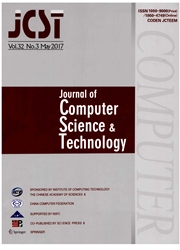

 中文摘要:
中文摘要:
在无线传感器网络,察觉到信息被期望是可靠地并且及时以一个特定的方法送到一个水池。然而,因为在节点之中从异步的责任周期和时间地并且空间地变化的连接质量导致的高度有活力的拓扑学,它正在质问达到这个目标。当前,一些机会主义的提交协议被建议了探讨挑战。然而,他们包含复杂机制在各个更向前决定最好跳跃,它为抑制资源的节点招致重开销。在这份报纸,我们建议一个无足轻重的人机会主义的提交(LWOF ) 计划。与另外的最近建议的机会主义的提交的计划不同, LWOF 采用也不历史的网络信息也不竞争进程选择一在数据传播以前更前面。它限制把候选人提交给一个优化区域,并且在 low-power-listening (LPL ) 利用序言 MAC 协议和双隧道的通讯到与高可能性向水池把一个包提交给一个唯一的下游的节点,没有在数据传播以前做一个提交的决定。在 LWOF 下面,我们优化 LPL MAC 协议有一篇弄短的序言(LWMAC ) ,基于在序言长度之中的关系上的理论分析,在各个的交货概率跳跃,节点密度和睡觉持续时间。模拟结果证明与 LWMAC 一起, LWOF 能以交货可靠性和潜伏完成相对好的性能,作为一个基于接收装置的机会主义的提交协议,当每包减少精力消费由时至少两次。
 英文摘要:
英文摘要:
In wireless sensor networks, sensed information is expected to be reliably and timely delivered to a sink in an ad-hoc way. However, it is challenging to achieve this goal because of the highly dynamic topology induced from asynchronous duty cycles and temporally and spatially varying link quality among nodes. Currently some opportunistic forwarding protocols have been proposed to address the challenge. However, they involve complicated mechanisms to determine the best forwarder at each hop, which incurs heavy overheads for the resource-constrained nodes. In this paper, we propose a light-weight opportunistic forwarding (LWOF) scheme. Different from other recently proposed opportunistic forwarding schemes, LWOF employs neither historical network information nor a contention process to select a forwarder prior to data transmissions. It confines forwarding candidates to an optimized area, and takes advantage of the preamble in low-power-listening (LPL) MAC protocols and dual-channel communication to forward a packet to a unique downstream node towards the sink with a high probability, without making a forwarding decision prior to data transmission. Under LWOF, we optimize LPL MAC protocol to have a shortened preamble (LWMAC), based on a theoretical analysis on the relationship among preamble length, delivery probability at each hop, node density and sleep duration. Simulation results show that LWOF, along with LWMAC, can achieve relatively good performance in terms of delivery reliability and latency, as a receiver-based opportunistic forwarding protocol, while reducing energy consumption per packet by at least twice.
 同期刊论文项目
同期刊论文项目
 同项目期刊论文
同项目期刊论文
 期刊信息
期刊信息
